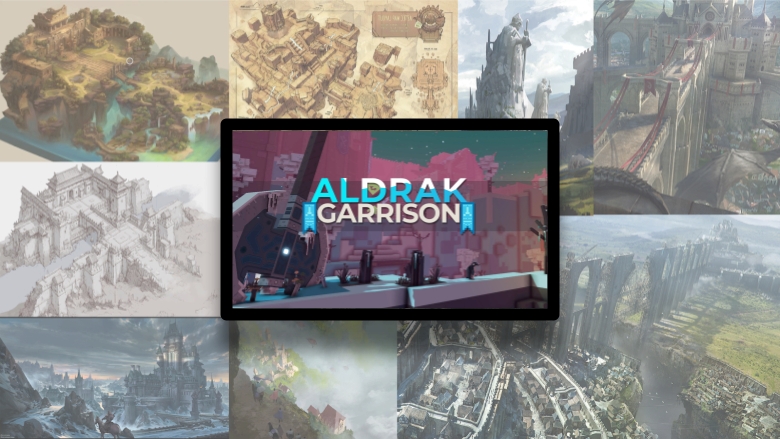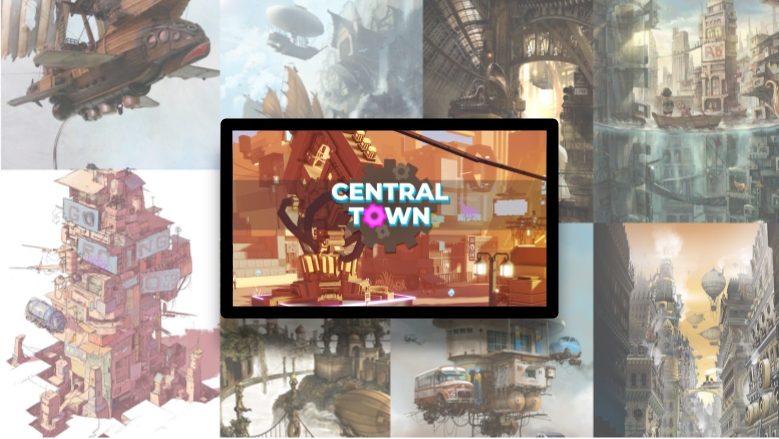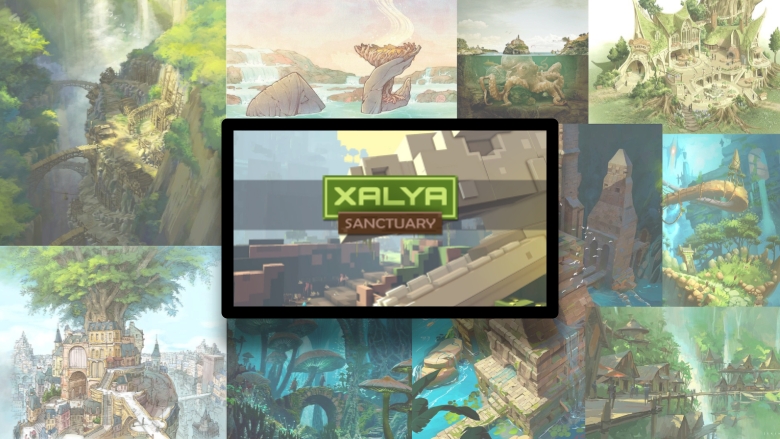Experience Art Concept
A cohesive art concept can make an Experience more immersive and memorable.
What is a Mood Board?
A mood board is a way to shape your thoughts and share your vision with others. It makes it easy for you to identify what you like or don't like when making design choices to arrive at a fine-tuned vision for your project.
WORLDBUILDING
Choosing a worldbuilding approach will help define your focus and streamline your search terms and AI prompts when building a mood board.
Examples by The Sandbox
The Sandbox designed three distinct factions of people with a world-first worldbuilding approach. The examples below compare each faction's planning mood boards and resulting loading screen game art.
Creating a Mood Board
Useful Tools to Create a Mood Board
Useful Sources for Images
Art Style
The Sandbox has a simplified voxelised art style, but there can be a lot of variation within it!
When choosing your Experience's art style, consider:
Palette
Plan cohesive colour use and mood with careful Colour Choice & Strategy. Use Light component and Post Process Effects behavior in Game maker to create mood without "repainting" assets.
Texture
Create the illusion of material types, depth, and surface details such as shine, damage, etc. See Textures & Materials Prioritise texture quality for assets players interact with the most visually or physically.
3D Complexity: Cumulative Effects Using simple art (left) allows for more game assets and logic than complex art (right).


Balance Makes for Better Performance
Prioritise logic: fewer assets, simpler art
Prioritise art: more assets, simpler logic
Add complexity in noticeable areas, use simplicity as filler. Example: Node Efficiency
Animation
VoxEdit templates include pre-made animations and customisable models.
Below: Repurpose models for new uses

"Unlock" a template to modify nodes for unique assets that reuse some animations.
Prioritise animation for assets players will interact with the most visually or physically.
Visual Hierarchy
Prioritize visual elements generally to begin deciding what kinds of assets your project needs most. The highest priority assets that players will see up close or interact with should have the most detail.
Example:
Space
Environmental (none)
Vehicles (high)
Structures (medium)
Farm
Environmental (high)
Interactive props (high)
Buildings (medium)
Underwater
Environmental (high)
Creatures (high)
Structures (medium)
Commonly Used Visual Elements
A list of common visual elements, their general purpose, and examples are included below.
🏞️ Environmental Offer wide angle views or basic quest scenery
Trees, stumps, bushes, flowers, vines, etc.
🗼 Landmarks Draw players to gameplay areas thematically
Towers, ruins, formations, centerpieces
🏗️ Structures Offer access, interaction, and shape
Modular pipes, rails, doors, windows, etc.
🚓 Vehicles Define non-player character movement
Cars, trucks, trains, boats, spaceships, etc.
🏠 Buildings Define societal elements (home, work, fun)
Homes/apartments, office buildings, shops, sheds, barns, restaurants, etc.
🪑Furniture Balance detail and space (visual, physical)
Tables/desks, chairs, cabinets, appliances, decor, rugs, lights, curtains, etc.
🧍Characters Engage and direct players, balance space
Quest NPCs, filler NPCs, quest enemies
🐉 Creatures Engage players emotionally, balance space
Animals, monsters, quest enemies, etc.
⚔️ Equipment Immerse players and reward them
Weapons, shields, armour, clothing, tools, etc.
🔨 Interactive Props Engage players more naturally with objects
Collectable (wood, fruit, coins, etc.)
Destructable (crates, barriers, etc.)
Interactive (buttons, platforms, etc.)
Ambience, Camera & Visual Effects
Prioritize the importance of settings to create a completely custom 🟦 Look & Feel for your Experience:
weather
music & sound effects
camera
visual effects
Examples:
If the sky is too saturated with bold colour, players may not notice assets in your Experience as well.
Music with lyrics may distract players who are trying to solve puzzles.
Visual effects add a lot of polish to an Experience, but may be distracting if used too much.
Additional Resource
Some information here can be viewed in the following Expert Creator Workshop:
Last updated
Was this helpful?




